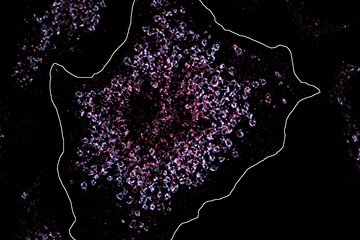microRNA involved in the development of depression
The molecule, which is increasingly formed in the brains of depressed patients, triggers fear reactions in mice
Major depressive disorder is a prevalent and debilitating illness, and is one of the leading causes of premature death worldwide. While various neurobiological factors have been associated with this complex disorder, the underlying cause is poorly understood. In an effort to better understand molecular pathways that play a role in this disorder, collaborating researchers from the Max Planck Institute of Psychiatry in Munich and the Douglas Mental Health University Institute at McGill University analyzed important regulatory genes called microRNAs (miRNAs) in the brains of MDD patients. They found out that the microRNA miR-323a plays an important role in the development of major depressive disorder and opens up possibility to explore it as a therapeutic target in mood disorders.

miRNAs are very small RNA molecules that have the capability to regulate the expression of many genes at the same time. Furthermore, miRNAs have been previously implicated in development of various neuropsychiatric disorders. In this study, the lead authors Laura Fiori and Aron Kos analyzed brain tissues from MDD patients who died by suicide for miRNA expression changes. They found that one particular miRNA, called miR-323a, stood out and was upregulated in a brain region called the anterior cingulate cortex (ACC) of MDD patients. This region is interesting since it was previously shown to change in depressed patients.
Since miRNAs function through the genes they regulate, the researches decided to identify the genes miR-323a regulates. They did so by combining computational prediction programs with transcriptome gene expression analysis and found Erb-B2 Receptor Tyrosine Kinase 4 (ERBB4) as one of the targets of miR-323a. ERBB4 is a receptor that binds neuregulins and is highly enriched in the brain and was previously shown to be disrupted in schizophrenia and mood disorders. In brain regions of MDD patients where miR-323a was high, a lower expression of ERBB4 was found. With additional cell culture experiments the researchers showed that miR-323a can indeed directly target and bind to ERBB4, resulting in regulation of this gene.
Further insights through mouse model
In order to complement these studies and further functionally characterize miR-323a the mouse was used as an animal model. This was possible since miR-323a is a highly evolutionary conserved gene, meaning that the same miR-323a gene is expressed both in humans and mice. The authors of the study made viruses that allowed for the specific manipulation of miR-323a in the ACC of the mouse. Using this approach, they found that in various behavioral tests an increase of miR-323a resulted in an increase in anxiety- and depressive-like behaviors. While the opposite was observed when miR-323a was decreased. Furthermore, analyzing the brains of these mice showed that ERBB4 levels were changed in response to the manipulated miR-323a expression levels. Suggesting that through the regulation of ERRB4, miR-323a can modulate the emotional state of the animal. While further studies are needed, this work could lead to novel approaches to treating depression.
ak












